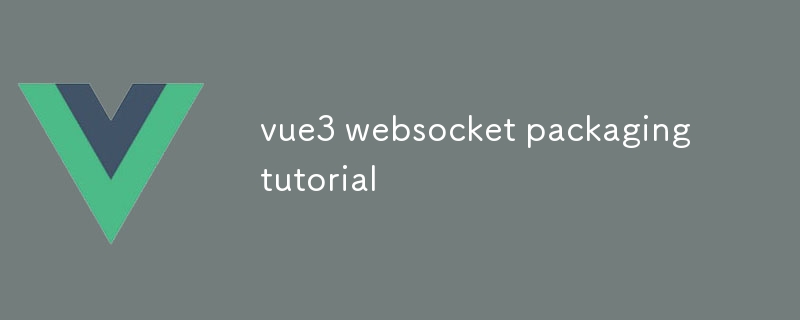This article discusses efficient WebSocket encapsulation within Vue 3. It explores various methods, including using libraries, creating reusable components, and implementing best practices like encapsulation, declarative syntax, and unit testing. A s

How to efficiently encapsulate WebSockets within Vue 3?
To efficiently encapsulate WebSockets within Vue 3, consider these steps:
- Use a WebSocket library:Use a dedicated WebSocket library, such as "ws" or "socket.io," to manage low-level WebSocket operations.
- Create a Vue component:Wrap the WebSocket logic in a reusable Vue component. This component should provide an API for connecting, sending, and receiving messages.
- Provide a reactive interface:Expose reactive properties and methods in the component to allow real-time updates in the Vue application.
- Handle events:Implement event listeners in the component to handle WebSocket events such as "open," "message," and "close."
- Use a plugin:Consider creating a Vue plugin to simplify the integration of the WebSocket component into your application.
What are the best practices for building reusable WebSocket components in Vue 3?
When building reusable WebSocket components in Vue 3, follow these best practices:
- Encapsulation:Keep the WebSocket logic isolated within the component to avoid conflicts with other application code.
- Declarative syntax:Use declarative syntax to simplify the creation and configuration of WebSocket connections.
- Composition:Leverage Vue 3's composition API to combine multiple WebSocket components to create more complex functionality.
- TypeScript support:Utilize TypeScript for strong typing and improved maintainability.
- Unit testing:Write unit tests to ensure the correctness and reliability of the WebSocket component.
Can you provide a step-by-step guide to setting up and using custom WebSocket wrappers in Vue 3 applications?
To set up and use custom WebSocket wrappers in Vue 3 applications, follow these steps:
- Install a WebSocket library:Install a WebSocket library such as "ws" or "socket.io" using your preferred package manager.
- Create a wrapper component:Create a Vue component that wraps the WebSocket library's API.
- Create a WebSocket instance:In the component's mounted() hook, create a WebSocket instance and connect to the server.
- Handle WebSocket events:Implement event listeners for WebSocket events such as "open," "message," and "close" in the component.
- Expose reactive properties and methods:Expose reactive properties, such as "connected" and "messages," to allow other components to subscribe to updates.
- Provide methods for sending messages:Provide methods in the component API to allow other components to send messages over the WebSocket connection.
- Integrate the component in your application:Use the component in your Vue application to establish WebSocket connections and exchange messages.
The above is the detailed content of vue3 websocket packaging tutorial. For more information, please follow other related articles on the PHP Chinese website!






